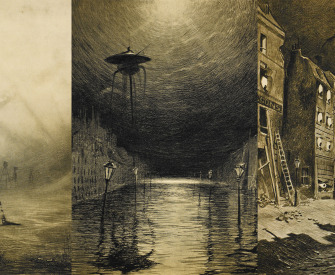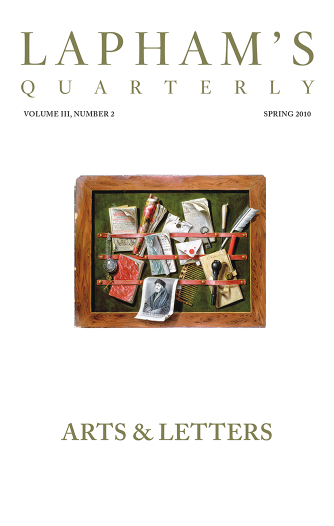They are ill discoverers that think there is no land, when they can see nothing but sea.
—Francis Bacon, 1605Special Experience
Whether at the bottom of the ocean, in the Arctic Circle, or on Mars, a sense of wonder can help an explorer of terra incognita stay sane.
By Kea Krause

Picture of the surface of Mars, taken by the Spirit rover on Sol 454. NASA/Jet Propulsion Laboratory/Cornell.
Outside the bathyscaphe, the environment was hostile, but inside, the craft hummed peacefully. When Swiss explorer Jacques Piccard had left the ocean’s surface a few hours earlier, he descended from an angry, rollicking January sea some two hundred miles off the coast of Guam. In the turbulence, the crew interpreted the launch of the Trieste, Piccard’s submersible, as ominous. But conditions had calmed underwater, as the seven-foot capsule—just big enough to hold Piccard and his cocaptain, an American naval officer named Don Walsh—descended through shafts of quiet blue light. Soon the men would be at the bottom of the Mariana Trench, 36,000 feet under the sea, pressed by eight tons of pressure per square inch. There, where it had once been supposed that life was unsustainable and the conditions unsuitable for human contact or survival, Piccard, Walsh, and the Trieste arrived. A flat, colorless, foot-long fish greeted them through one of their craft’s portholes.
It was 1960, and the world was expanding in every direction. Just a few weeks before the descent, John F. Kennedy had announced his candidacy for president. In Geneva, the first CERN particle accelerator began propelling protons. That year the United States would launch a variety of satellites to study weather and navigation, and underwater the USS Triton would complete the first successful circumnavigation of the globe in a nuclear submarine. Human curiosity advanced toward the boundaries of scientific and geopolitical limits. Piccard, with his submersible, was at the bottommost front line.
The trip was quick. After years of planning and trials, it took Walsh and Piccard only four hours to travel from the surface to the bottom of the trench, the deepest-known part of the ocean, called Challenger Deep. During the descent, they observed the sounds of the Trieste and the shifting light pouring through its portholes. At two thousand feet, the depth swallowed all sunlight, and Piccard reported that, visually, “it was completely night.” Since Piccard and Walsh, the only other man to visit the Mariana Trench has been film director James Cameron. “When I got to the bottom,” he wrote, “it was completely featureless and uniform. My feeling was one of complete isolation from all of humanity.” More than anything, one realizes “how tiny you are down in this big, vast, black unknown and unexplored place.”
Piccard and Walsh stayed for only half an hour. Unmoored from everything, the pair took stock of the scene and then headed back up. They had brought nothing with them to measure or probe or sample or label, and they conducted no experiments. They went, they saw, they returned; you might conclude that they made the trip for the sake of seeing if they could get there, never knowing if they would even be able to make it all the way down, much less back up.
Three decades earlier, in the winter of 1934, the American rear admiral Richard Byrd had traveled to a different extreme, attempting to man a weather station in the center of Antarctica by himself during the continent’s six-month winter night. He had told his funders that his goal was to observe polar light and to study weather, but in his 1938 memoir of the experience, Alone, he confessed to a different motivation: “We are caught up in the winds that blow every which way,” he wrote. “And in the hullabaloo, the thinking man is driven to ponder where he is being blown and to long desperately for some quiet place where he can reason undisturbed and take inventory.”
During that solo winter, he observed that “it’s not getting to the pole that counts. It’s what you learn of scientific value on the way. Plus the fact that you get there and back without being killed.” Byrd’s logic, which foretold that trip by Piccard and Walsh, follows an old, hand-me-down adage. Even just writing it out makes me feel like a Girl Scout: The journey is its own reward.
But what sounds at first cheesy and well-worn may reveal a kind of general truth about adapting to terra incognita. In the 1990s a Canadian psychologist named Peter Suedfeld, along with his colleagues Claude Bachelard and Jack Stuster, was commissioned by NASA, in research initiated by the French space agency, to study French officers working in an Antarctic research station. The goal was to understand how humans deal with confined, close-quarter spaces in order to find what profile might be required for long-duration space exploration. The researchers assigned the officers the task of keeping journals; when they studied the journals later, they found that particular themes emerged. One of these the researchers described as expressing “an appreciation for the special experience of living and working in a remote, hostile, and unspoiled environment.” Such entries include “feelings of awe concerning natural phenomena, such as violent storms and breathtaking views.” These struck the psychologists as important; appreciations like this implied a positive kind of personal adjustment to the situation. They labeled these entries “Beauty/special experience/wonderment.”
Cameron described the “big, vast, black unknown” that Walsh and Piccard first encountered at the bottom of the trench; Byrd was enraptured in his polar home by the sky and stars, unimpeded by the lights of civilization, and he romanticized them extensively in his diary. “Numberless stars crowded the sky. I had never seen so many. You had only to reach up and fill your hands with the bright pebbles,” he wrote of his first stunning night alone. “And it was all mine: the stars, the constellations, even the earth as it turned on its axis. If a great inward peace and exhilaration can exist together, then this, I decided my first night alone, was what should possess the senses.”
In 1982 cosmonaut Valentin Lebedev was awestruck from yet another angle when he spent a record-breaking 211 days in the space station Salyut 7. Reflecting from his capsule above Earth, he wrote, “I watched the aurora australis in the Southern Hemisphere above Antarctica. This really is the end of the world! Magnificent! Light-colored cloud wreaths spread on the horizon, fountains of white-green-burgundy streams reaching up to the stars surrounding the station as we flew in Earth’s shadow through the light jungles of silent space.”
What marks the person who can gaze out a window in wonder rather than fall apart in confined space? It is a question there is a growing urgency to answer. Soon humankind will travel to Mars, undertaking a journey estimated to take a minimum of two and a half years. Whoever will be among the first to go must be capable of tolerating an extended hiatus from family and friends, from trees and running water, from holiday pastimes and the comforting banalities of a Sunday afternoon—from Earth—without growing despondent. Suedfeld wrote, “To appreciate the nature of life in a capsule, people have to open and perhaps to bend their mind a bit.” In other words, NASA is searching for the science of not losing your cool.
The Trieste II, the successor to Jacques Piccard’s bathyscaphe, rests in Keyport, Washington, in the parking lot of the Naval Undersea Museum. A visitor is likely to ignore the spindly wire roping it off from touch. What, she might ask herself, could the pat of a hand do to the surface of a machine that’s been to the bottom of the ocean? Why not run her finger along the thick seam of the bathyscaphe’s massive tank, picturing what it’s like to peek out a muddy porthole into the pressured blackness of deepest sea?
At first, the Trieste II appears big enough to accommodate a crew. But what initially presents as the ship’s cabin, a structure that rivals the size of a short school bus, is actually a buoyancy tank, which is what’s filled with incompressible gasoline to power the return journey up. The space for humans is a little sphere that calls to mind the head of R2-D2 and is the size of a love seat, nestled tightly below the bathyscaphe’s belly. When you adjust your perspective, you realize riding in the Trieste II would be like sinking to the bottom of the ocean in an airtight golf cart. It’s brilliant and terrifying.
The design wasn’t originally Jacques Piccard’s; it was his father’s. And though the word bathyscaphe is inherently oceanic—derived from the Greek words bathus, “deep,” and skaphos, “ship”—the first design was meant for outer space. Auguste Piccard, a Swiss physicist, inventor, and explorer, was an avid balloonist who desired to travel where no man had gone before—the stratosphere—to observe cosmic rays. So he fashioned a giant pressurized sphere out of aluminum and, in 1931, took one of the first trips to outer space. Using a hot-air balloon to lift the little sphere carrying himself and one other man, Auguste floated nearly ten miles above the earth’s surface.

Surprised, or Infidelity Found Out, by Christian Wilhelm Ernst Dietrich, mid-eighteenth century. The Metropolitan Museum of Art, Purchase, 1871.
No man had yet ascended to this height, and the flight had some hair-raising foibles. When poking his head out of the sphere’s portal to do a final preflight check, Auguste’s assistant was shocked to find the balloon had already lifted the craft off the ground. Later, a lack of airflow in the vehicle almost asphyxiated them both. At last, though he had anticipated landing in the Adriatic Sea, Piccard crash-landed onto a glacier in the Austrian Alps. Grainy video footage shows a group of men rolling Piccard’s wrecked sphere down a mountain like a snowball.
Auguste died in 1962, two years after Jacques’ pioneering journey to Challenger Deep. Though the two never undertook an expedition together, the father-son team were the progenitors of the capsule journey, one of the only known ways to explore frontiers where conditions are considered too hostile for humans to survive naturally. Capsules—pods, vessels, crafts—are pressurized and facilitate travel to these alien terrains. It’s not a coincidence that the family name may be familiar; Jean-Luc Picard, of the USS Enterprise, was so named by Star Trek creator Gene Roddenberry as a nod to the family who went where no men had gone before.
The Piccards’ work was known to NASA early on. In 1966 Jacques was commissioned to build a craft that could drift underwater in ocean currents to help NASA study the mental health of future long-term space travelers. It was ready to launch in the summer of 1969. Just two days before the July 16 takeoff of Apollo 11, NASA towed the deep submarine off the Florida coast and released it into the Gulf Stream, where it drifted underwater 1,400 miles northward, resurfacing four weeks later near Maine. The immediate goal of the expedition was to study currents off the Eastern Seaboard of the United States. But oceanic drafts were not the only dynamic being studied aboard the Ben Franklin. Among the submarine’s aquanauts was a NASA representative assigned the task of observing the psychological effects of isolation on the mission’s crew, which was sealed off and subsumed in the fifty-foot capsule.
The observer had a number of boxes to check, including making a record of the crew’s sense of humor. It was not as odd a request as it might seem. How explorers dealt with confinement on a prolonged manned mission was a primary NASA concern, and for good reason. When Ernest Shackleton attempted to make the first land crossing of Antarctica, he drifted on a floe in Weddell Sea for two years after his ship was crushed by the ice that had locked it in place during the winter months. And yet no one on the mission died, a fact that is often attributed to Shackleton’s unorthodox approach to hiring and his propensity for jokes. His droll advertisement was thought to have read: “Men wanted for hazardous journey. Low wages, bitter cold, long months of complete darkness, constant danger. Safe return doubtful. Honor and recognition in case of success.” Those who responded seem likely to have been willing to take whatever fate that came. And the sensibility is not so far from that expressed in the opening statement of Andy Weir’s 2011 novel The Martian, in which capsule-dwelling protagonist Mark Watney frankly confesses, “I’m pretty much fucked.” (He survives.)
The 1969 Gulf Stream dive broke underwater records, and NASA began its process of gathering information on how a mind behaves in prolonged confinement. The submarine making the mission possible was called a mesoscaphe—meso, “middle,” replacing bathus—designed by the younger Piccard, based on that first model, which took the elder Piccard to one end of our world and his son to the other.
All of this history and none of it is apparent in the parking lot of the Naval Undersea Museum, where Trieste II makes very little sense when surrounded by cars. Their mundanity neuters the bathyscaphe’s wonder; they are, after all, just machines for getting around. I visited on one of those days close to Christmas, when people tend to wrap things up early and slip out quietly, and as cars filtered out of the lot, the machine began to dominate the empty blacktop. The low winter sun and scattered clouds shot light that illuminated the craft like a glowing white whale, luminescent. It could have been breathing.
NASA’s research presents an attempt to gain scientific purchase on what past explorers have discovered in practice: whether confined with others or isolated in solitude, one can feel dangerously lonely at the ends of the world.
After a few weeks of checking his meters and making lackluster meals in his Antarctic station, Byrd felt his bravado subtly fade. Though he continued to be amazed by his surroundings, monotony set in. He reflected on his strategy: “The brain-cracking loneliness of solitary confinement is the loneliness of a futile routine. I tried to keep my days crowded; and yet, at the same time, I, the most unsystematic of mortals, endeavored to be systematic.” Knowing that idleness was a threat to his sanity, Byrd intentionally did odd jobs and tasks at a slow pace so they would draw out over several days and keep him busy. But even this enterprising was not enough to ward off the inevitable. “This morning I had to admit to myself that I was lonely. Try as I may, I find I can’t take my loneliness casually; it is too big. But I must not dwell on it. Otherwise I am undone.”

The Finding of Moses, by Tintoretto, sixteenth century. The Metropolitan Museum of Art, Gwynne Andrews Fund, 1939.
Though he didn’t know it at the time, Byrd was being poisoned by carbon monoxide in his airtight hut. Hallucinations amplified his solitude, and though he fought against giving in to these specters, things deteriorated. “I seem to be groping in cold reaches of interstellar space, lost and bewildered. The room is a nondimensional darkness, without shadow or substance; even after all these days, I sometimes ask myself, Where am I? What am I doing here?” He was ultimately saved from his almost certain demise by his colleagues back at base camp. The admiral’s weekly Morse-code dispatches had become nonsensical and hard to decipher, so his crew broke protocol and headed into the Arctic winter to rescue him.
A mind unraveling—this is a central concern of NASA’s in assembling a team that would go to Mars. In Suedfeld’s study, the researchers gave guidelines to the officers, dictating how to journal most effectively for the sake of the project. They reminded their subjects that it’s easy to exaggerate trivial issues in confinement, asked them not to focus on the negative in their entries, and requested a sense of humor to keep things in perspective.
It’s tempting to imagine how such guidelines would have affected the chronicling efforts of Byrd or Lebedev, who were certainly not journaling with the explicit idea, as the French officers were, of providing “future generations of spacecraft designers with valuable insights regarding human performance that could not be obtained in any other way.” Byrd allowed himself to address the darkness of his situation in his journal. Lebedev grew depressed and existential toward the end of his trip, often even questioning the purpose of his journey.
But NASA’s future concern is how to foretell and control a lonely traveler’s behavior—how to promote the most productive pioneers. One of its lines of inquiry extends back to an incident in the 1950s in which a member of an international Antarctic team developed symptoms of schizophrenia after being isolated too long on the desolate tundra. Another has examined the behaviors of isolated POWs in the Korean War. It’s been determined that, not unlike what prisoners suffer in solitary confinement, being subjected to long periods of deprivation leads to extreme mental deterioration. Researchers describe this as “winter-over syndrome,” wherein crew members become depressed, irritable, and cognitively impaired. It is nearly identical to a condition called “security housing unit syndrome,” which prisoners develop after long periods of time spent in solitary confinement. In tight, desperate spaces, even voluntary confinement can take the psyche hostage.
So how can people, as Suedfeld put it, “bend their minds” to keep sane in a capsule? One way is to surround explorers with a sense of the natural world they left behind. Suedfeld’s report tells the story of a ship that in 1826 departed France loaded with boxes of olive and fig trees. The trees were being carried to Australia as a favor, but the ship’s captain found they provided a meaningful reminder of home, and he wrote in his log, “In the dreary monotony of the ocean, their greenness delights the eye, lifts the jaded spirit, and brings back happier thoughts.” Lebedev’s diary tells a similar tale. The cosmonaut fixated on a plant project in which he propagated pea shoots on the space station. His perky updates about the fledgling plants reveal their stabilizing force. “This is a little space garden,” he reported. “When I smell it, it seems I can smell the earth.”
Another method is the one that might have saved Byrd, had the carbon monoxide not almost got him. Studies of Shackleton’s expedition concluded he kept his men alive by forcing them to do time-consuming work, no matter how arbitrary it was—housework, in this context, presenting as a form of salvation.
On Mars, it seems, it will be smart to have a hobby. I recommend gardening.
In the great Mesopotamian Epic of Gilgamesh, the title character, the king of Uruk, becomes consumed with worry about death after seeing his best friend perish from illness. Despite being two-thirds god, Gilgamesh is not immortal. So when he hears of a man named Utnapishtim who holds the secret of eternal life, he sets out into the hinterlands to find it.
Every man takes the limits of his own field of vision for the limits of the world.
—Arthur Schopenhauer, 1851During his journey, he is warned that his quest is impractical, but such advice doesn’t stop him. When Gilgamesh finally reaches the man he’s been looking for, the story gets more complicated: Utnapishtim had been granted eternal life only as a reward for building a boat to save his family, animals, and plant seeds from a flood sent by the gods. Afterward, the gods swore never to destroy mankind again; men would remain mortal, though humanity would prevail.
Gilgamesh is unable to share in Utnapishtim’s reward, but he is told of another option: there is a plant at the bottom of the ocean that when consumed can restore men to the strength of their youth. He goes after it, binding his feet to boulders, sinking to the ocean floor, and finally locating his treasure. But he doesn’t have it for long. A serpent steals it, and Gilgamesh humbly returns home.
Even though both his mythical missions to find personal immortality failed, the world’s earliest deep-sea explorer probed those unknown murky depths and delivered a finding no one had even known to look for: he brought back the revelation that mankind had been spared.
It takes a strange faith to approach a frontier isolated from others for the sake of possible new knowledge. A conservative view would have it that traveling outside known realms for the sake of research is too costly and dangerous for the slim chance of a useful result. In 1912 Robert Falcon Scott’s disastrous journey on the Terra Nova to the Antarctic—in which team members perished due to untested technology and lapses in judgment—called into question the decision to explore such remote spaces without the promise of concrete gains. Scott’s fellow explorer Apsley Cherry-Garrard fought such criticism, writing in his 1922 memoir, The Worst Journey in the World, “It is really not desirable for [those] who do not believe that knowledge is of value for its own sake to take up this kind of life.” Cherry-Garrard was particularly upset about the tragic ending to the expedition—a failure by many metrics. But the mission’s ultimate effect may not entirely be quantified. Whatever the men of the Terra Nova were looking for outweighed, at the outset, the horror of trying to find it. Finding nothing at all was a risk they were willing to take.
This sense of risk is not undersold back at the Naval Undersea Museum in Keyport, where the walls are plastered with placards reminding visitors of the heroics that went into visiting the seafloor, hammering home the lives lost, dangers faced, and hardships endured just so you could be there to visit the Trieste II. In the gift shop, I bought a hat with the U.S. naval deep-sea-diver insignia on it, the image of two seahorses on either side of an old steel diving-suit helmet. The volunteer ringing me up eyed me and asked whether I was a diver myself. I confessed I wasn’t, which was true, but I knew you don’t always have to travel to hostile climates to know what being alone feels like, that loneliness as it confines and isolates is present on the seafloor as well as in the laboratory, the journal entry, or the artistic endeavor. Whatever removes you from comfort, forces you into the unknown, asks you to brave the small space of personhood to try to feel a sense of—as some would have it—beauty, special experience, or wonderment.

Design for a Clock in the Form of an Elephant with an Indian Driver, from a 1315 edition of The Book of Knowledge of Ingenious Mechanical Devices, by al-Jazari. The Metropolitan Museum of Art, Rogers Fund, 1955.
I thought of a friend of mine who worked as a cook in an Antarctic research station in 2007 and who recalled Robert Falcon Scott’s tent, perfectly preserved in ice just how he left it nearly one hundred years before, filled with frozen dead penguins and newspapers from the turn of the twentieth century. To stay active, my friend would often leave the station and walk out on the tundra, where he would feel overwhelmed by the idea that he could walk to his death in any direction. “It made me realize everything is so fragile,” he told me.
An explorer’s reverence for fragility and awe—as important as strength or courage. “We are lucky people,” wrote Lebedev about being isolated with a Russian colleague in the space station, “because out of four billion people, just the two of us are flying in space, an event we still don’t understand completely. We still don’t comprehend its importance in our lives.”
Byrd, too, struggled to define his experience, one of intense isolation along with undeniable revelation. “No doubt it was partly animal: the sheer expanding discovery of being alive, of growing, of no longer being afraid. But there was more to it than just that,” he wrote. “There was the sense of identification with vast movements: the premonition of destiny that is implicit in every man; and the sense of waiting for the momentary revelation.”
During such moments, one has to be ready, patient, and alone.


